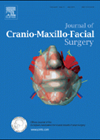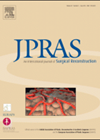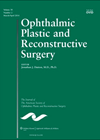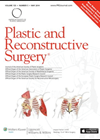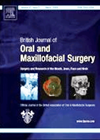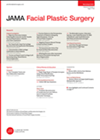
Journal Reviews
An analysis of 60 treated cystic lesions in children
This is a retrospective single centre study of 60 consecutive cases in children. Ages are from four months to 14 years and cover the period 2000-2012. All patients were treated under a general anaesthetic. As expected most of the cysts...
Free flap reconstruction in stage 3 bisphosphonate related osteonecrosis
There is no widely accepted gold standard for the treatments of bisphosphonate-related osteonecrosis (BRONJ). Whereas the lesser stages of this BRONJ seem to respond well to conservative and minimal invasive therapies there is controversy regarding the treatment of the later...
Additional venous anastomoses to safeguard DIEP flaps
That DIEP flaps can be troublesome is not news and many descriptions exist trying to circumvent these problems. The most common problem is venous congestion in the flap and this paper presents an ingenious method of anticipating and forestalling such...
Coupler microvascular anastomoses: how good?
This is a paper written by a group of reconstructive surgeons and school of computing. This study used computational fluid dynamics to model blood flow through ‘idealised sutured and coupled’ vessels. They investigate if the anastomotic technique affects intra vascular...
Patient-reported outcomes in oculoplastic surgery
This is an important if somewhat difficult to grasp article which tries to formally address the subject of patient-reported outcomes in oculofacial surgery. The authors have conducted an extensive review of the literature searching for instruments (questionnaires) which have been...
A tarso-conjunctival flap for paralytic ectropion
This is a review of 110 patients with paralytic ectropion who underwent a lateral tarso-conjunctival flap procedure. The technique involves fashioning a 4-8mm wide lateral tarso-conjunctival flap in a similar way to a lateral Hughes flap. This is then sutured...
USA resident working patterns and on-call
As debate rages at home regarding the uneasy relationship between the restriction on trainees’ working hours, on-call patterns and the goals and outcomes of plastic surgery training programmes, it is interesting to read of similar concerns across the Atlantic. This...
Changing trends in the management of osteoradionecrosis (ORN)
In the wake of new drugs that have been introduced for ORN like pentoxifylline, tocopherol, clodronate etc, traditional ‘conservative’ management of osteoradionecrosis (ORN) including minimal surgical debridement and hyperbaric oxygen therapy (HBOT) is under review. This study is a retrospective...
Is it time for cone-beam CTs to replace the traditional orthopantomogram in the primary diagnosis of temporomandibular joint disorders?
Cone-beam computed tomographic (CT) requires a lower dose of radiation compared to the multidetector CT and provides much more detailed information in 3D about the bony structures of the temporomandibular joint (TMJ) when compared to the traditional OPG. In this...
Role of copper ions in drinking water in the pathogenesis of oral submucous fibrosis: the missing link in the aetiopathology?
Often a breakthrough link in the understanding of the aetiopathogenesis of a hitherto common pathology that has been evading the medical community may not come from the hi-tech labs of the developed world but from the intelligent investigations from a...
Subcutaneous botox
The authors of this paper performed a double blind, randomised, prospective trial on 19 patients receiving intramuscular botulinum toxin injections on one side of the forehead and subcutaneous injections on the other. Objective assessment of brow elevation and subjective self-evaluation...
Loosen up
Lower eyelid retraction is a complex eyelid malposition with varied causes and anatomic features that make correction of eyelid position challenging. This original study presents a new surgical concept for correction of lower eyelid retraction in a particular patient population:...

